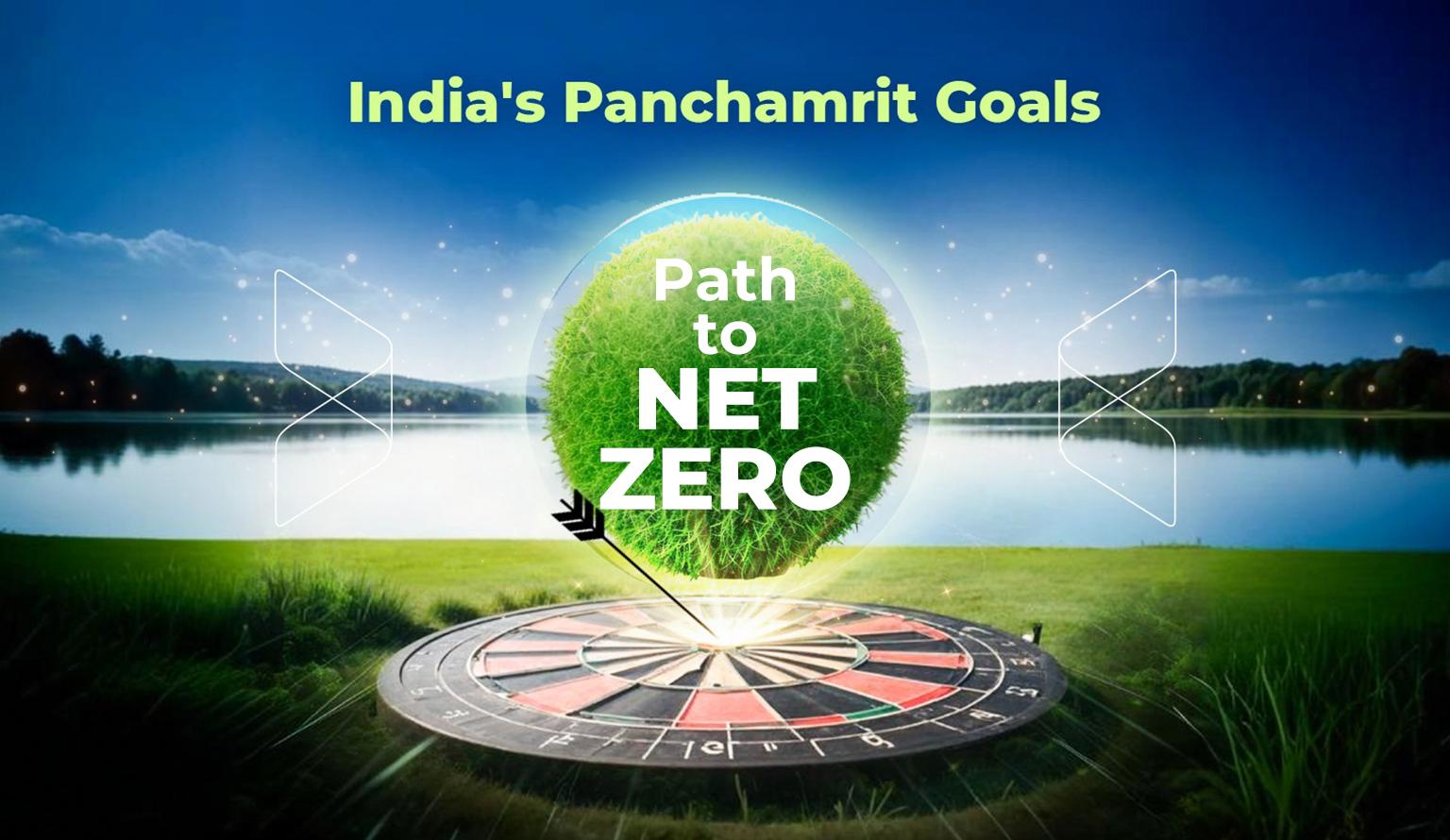At the 26th UN Climate Change Conference (COP26) in Glasgow, Prime Minister Narendra Modi unveiled India’s Panchamrit goals, a visionary roadmap to achieve net zero emissions by 2070. The word Panchamrit translates to “five nectars” in Sanskrit, symbolizing five important commitments that form the crux of India’s climate action plan. This comprehensive strategy underscores India’s commitment to sustainable development and positions the country as a leader in the global transition to green energy in India.
The 5 Goals Set Under India’s Panchamrit Plan
-
Achieve 500 GW of non-fossil fuel energy capacity by 2030
India aims to generate half its electricity from renewable energy sources by 2030. This includes solar, wind, and hydropower, marking a transformative step towards reducing dependency on coal and other fossil fuels. Meet 50% of energy requirements from renewable energy by 2030
This target will significantly boost India’s green energy capacity, reflecting the government’s efforts to align its policies with global sustainability goals. The rise of renewable energy projects like rooftop solar and large-scale wind farms highlights India’s determination to transition to a cleaner energy mix.-
Reduce total projected carbon emissions by 1 billion tons by 2030
A direct response to mounting concerns over escalating greenhouse gas emissions, this target focuses on cutting down India’s carbon footprint without hampering economic growth. -
Lower carbon intensity of the GDP by 45% by 2030
By improving energy efficiency and promoting sustainable practices across industries, India aims to decouple its economic growth from carbon emissions. This commitment signifies a shift toward low-carbon technologies and industrial innovation. -
Achieve net zero emissions by 2070
The India net zero target signifies a long-term commitment to neutralize greenhouse gas emissions by balancing them with carbon absorption through natural and technological solutions.
The Roadmap to Green Energy in India
India’s Panchamrit goals align closely with its existing renewable energy programs and initiatives. The country has already become the third-largest producer of renewable energy globally, with ambitious plans to expand this capacity further. Initiatives like the International Solar Alliance (ISA) and the National Hydrogen Energy Mission highlight India’s proactive stance on green energy.
Additionally, the government has announced significant investments in electric vehicles (EVs), energy storage, and hydrogen technologies, all of which are pivotal for achieving the net zero target. With favourable policies, private sector involvement, and international cooperation, India is creating a robust framework to accelerate its energy transition.
Challenges and Opportunities in Achieving India’s Net Zero Target
Transitioning to renewables requires large-scale investments, technological innovation, and policy consistency. Moreover, balancing economic growth with environmental sustainability poses a unique challenge for a developing country like India.
However, the opportunities are immense. India’s renewable energy sector offers untapped potential for job creation, economic growth, and technological advancements. Investments in green infrastructure can catalyse rural development and energy security, creating a sustainable and resilient economy.
Global Significance of India’s Panchamrit Goals
India’s commitments have been widely recognized as a key contribution to global climate action. Achieving the India net zero target will help mitigate climate change and also inspire other developing nations to pursue ambitious sustainability goals. By integrating green energy in India with its development agenda, the country has showcased how economic growth and environmental preservation can go hand in hand.
India’s Panchamrit goals represent a strategic approach to tackling climate change while fostering sustainable development. Through these targets, India has positioned itself as a leader in the global quest for a greener future. At Jakson Group, we believe our commitment to sustainability plays a role in this transformative journey. Through our initiatives in renewable energy, green hydrogen, and energy efficiency solutions, we align our efforts with India’s Panchamrit goals. We actively work toward achieving our own net zero targets, reinforcing our vision of a sustainable future. By embracing renewable energy, reducing emissions, and prioritizing innovation, India is paving the way toward a cleaner, healthier planet for generations to come.
FAQ:
What does the term “Panchamrit” mean in the context of India’s climate goals?
The word “Panchamrit” meaning “five nectars” in Sanskrit refers to five major climate commitments announced by the Government of India at COP26 in Glasgow.
Why has India set such ambitious goals under Panchamrit?
These goals reflect India’s dual aim: to align with global climate efforts and pursue sustainable development while maintaining economic growth. The targets also enhance India’s energy security by reducing dependence on fossil fuel imports.
How does the target of 500 GW non-fossil capacity by 2030 impact India’s energy sector?
This target means ramping up solar, wind, hydro, and other non-fossil energy sources at a large scale. It will require strengthening grid infrastructure, storage systems, manufacturing of clean-energy components, and large investments
What are the main challenges in achieving the Panchamrit commitments?
Some of the key challenges include: financing the transition, ensuring grid reliability with variable renewables, scaling manufacturing and technology, policy consistency, managing land/ resource constraints, and balancing growth with emissions reduction.









